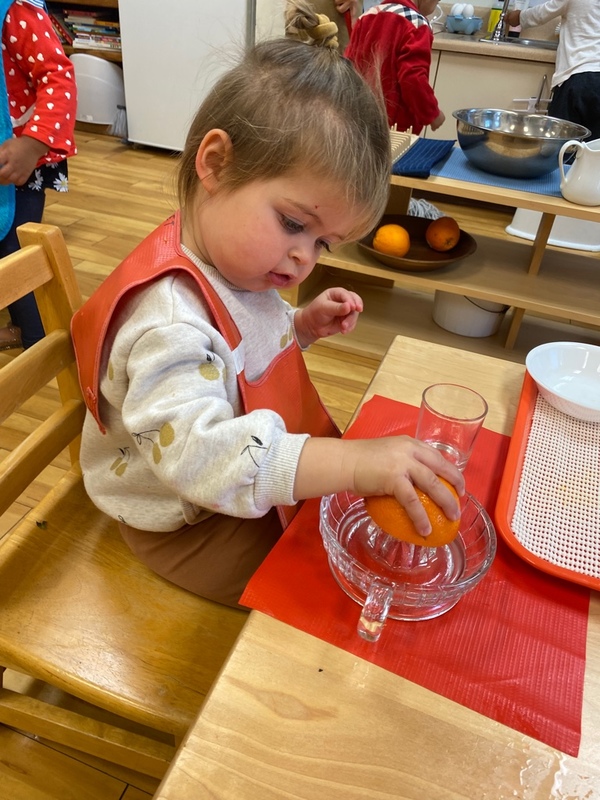(858) 759-0631
Below are some ideas for a supportive Montessori environment at home:
Kitchen
- Set up shelves with child-sized cups, plates, bowls, silverware, and small pitcher of water.
- Have a basket with snack for one portion ready for your child to prepare. (Cutie oranges, bananas that the end is cut off so child can easily peel, or one slice of bread with a small container of cream cheese or peanut butter and jelly are some examples of things your child can make.)
- A small, spreading knife (non-serrated), for spreading if you have bread or crackers to spread something on.
- For meals you can take down plates and silverware, napkins, and placemats. Place them on a table that your child can easily reach. Remind your child if necessary that we will start with the placemats, placing them on the dining table one at a time until setting in complete.
- Keep in mind that the more the child has to do with the preparation of the meal, the more likely they are to eat it. Washing and scrubbing fruits and vegetables are something else your child might enjoy doing.
Dressing
- Choose 2 to 3 appropriate outfits for your child to choose from in the morning. Place them on a low closet pole-hanger, on their bed, or in a small dresser or nightstand that your child can reach. This may detour your child from choosing something too hot for warm days, or shorts and sandals on rainy days. It may also help to speed up getting ready in the morning, giving them the freedom to choose within limits.
- Place a hamper that your child can reach and open easily so that they can put their own dirty laundry inside.
- Allow your child to assist you, in small ways, however they can. Some of the children in class can remove their own sheets off of their bed and put them in the laundry basket.
Play environment
- Big bins full of toys work well, though shelves with just some of their toys is optimal. The reason this works even better than bins is because your child can see everything without taking all their toys out and spreading them throughout the room. When they have too many choices, it can be difficult for them to see all that there really is. Keep the bins and store some of their toys out of sight. If you rotate these toys, when you take the old toys out and replace the ones that have been on the shelves for a while, it usually seems like the old toys are new again. We do this in our classroom with the materials and it works very well.
- Encourage your child to put away each toy as they finish with it. They are already practicing this at school. This helps develop their sense of order. Keeping things orderly on the outside, helps your child to develop an internal sense of order.
Toddlers have a natural desire to help. They love to help us sweep, mop, and clean tables. If they make a mess, allow them to clean it up. They do dishes by hand at our dish washing station. We put their washed dishes in the dish washer to "sterilize them".
Take advantage of your toddlers' helpful nature! Have fun!
– Miss Maria, Ladybug Teacher
Blog Cateogry:
Featured Image:

